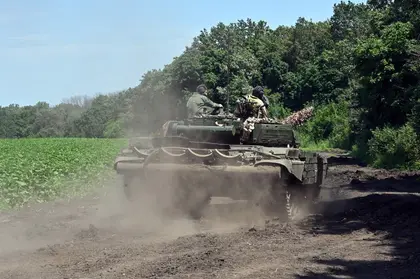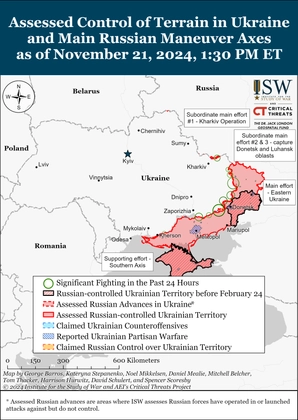Ukraine’s defense minister has admitted the summer offensive is “behind schedule” but insisted it is still going according to plan.
In an interview with CNN, Oleksii Reznikov said he is “not worried,” adding there was a “misconception that every counteroffensive should be quick.”
What’s causing the delays?
Ukraine’s summer offensive has been slow-moving in the face of deeply-entrenched Russian positions protected by vast minefields that troops from the Armed Forces of Ukraine (AFU) are having difficulty moving through.
Last week, the Ukrainian President’s office admitted the counteroffensive “will be quite difficult, long and will take quite a lot of time.”
Reznikov expanded on this, highlighting that as well as the problem of mines, Russia also has air superiority over much of the battlefield and they have more men.
“It's a question of air defense,” he said. “It's a question that we have a very long battlefield line also. And we have against us a big quantity of enemies.
“So, it's war, it's not a computer game. Our generals, our commanders, they see the real situation on the battlefield.”
How are they overcoming these obstacles?
Until Ukraine receives F-16s and trains its pilots, there’s not a lot they can do about the air superiority situation.
On the subject of mines, Reznikov said Ukrainian forces have had to resort to clearing paths through the fields by hand.

Ukraine Modifies Domestic UAV Into FPV Strike Drone ‘Aircraft Carrier’
“We need to use our soldiers, sappers, deminers very slowly, and very slowly preparing the corridors for the real offensive movement,” he said, adding this activity in different places would confuse Russians on the main direction that Ukraine would take.
Ukraine may also be helped in this by the arrival US-supplied cluster munitions which could be deployed in ways that could clear them relatively quickly.
What about the manpower disparity?
Reznikov stressed that one of the main considerations is the lives of the Ukrainians on the frontline.
“And again, I have to repeat the main value for us is the life of our soldiers,” Reznikov said.
This is not an issue for Russian forces which has had no qualms about sending tens of thousands of poorly-trained and poorly-equipped men to face mass slaughter in what have been dubbed “meat waves.”
The intercepted phone calls of Russian soldiers talking to their families and friends paints a bleak picture of their likely short lives.
According to recent comments from Kyiv officials, Ukraine has shifted tactics slightly to take advantage of this, focusing more on taking out large numbers of Russian troops and equipment rather than gaining ground.
Brig. Gen. Oleksandr Tarnavsky, head of the AFU’s Tavria Operational-Strategic Group of Forces, said Ukrainian forces under his command are “systematically knocking the enemy out of their positions.”
An early June AFU attempt to break through Russian lines in Ukraine’s Tavria region, a territory also known as the Kherson-Zaporizhzhia sector, was stopped nearly cold by Russian defenses near the town of Mala Tokmachka, with the AFU’s 47th Mechanized Brigade losing a reported 10-11 Bradley infantry fighting vehicles and 3-5 Leopard 2 tanks in less than a day of fighting.
Ukrainian personnel casualties were up to 50 dead and wounded, according to unofficial counts.
Since then, AFU’s assault strategy has become less ambitious, with smaller Ukrainian combined infantry and armor units advancing on a Russian position after heavy bombardment. The tactic has seen some success in the eastern Bakhmut sector but across the front reduced the pace of AFU advances to 100-200 meters in many locations.
Tarnavsky said capturing ground was not as important as hollowing out the Russian army by destroying its troops and equipment, in a Saturday statement.
He claimed that over the past 24 hours his soldiers had inflicted serious damage on Moscow’s forces, eliminating “two companies” [200-300 personnel], a main battle tank, seven anti-aircraft systems, 12 artillery systems and mortars, military trucks, and seven Russian ammunition depots.
Colonel Serhiy Baranov, head of the AFU’s Directorate of Missile Troops, Artillery and UAV systems said in an official statement on Saturday that “around 90 percent” of all Russian losses in the war are caused by AFU indirect fire systems such as cannon, howitzers and precision-guided missiles.
Ukrainian long-range strikes in the future will become even more deadly because the AFU is now able to field targeting data management software, more efficient logistics chains and, in the near term, an army-wide automated fire management system, Baranov said.
Ukraine’s artillery will soon fully outclass its Russian opponents, he claimed. “We have put together and created a long-distance ‘fist of fire’, and now will make it harder-hitting and more effective, tighter and more devastating,” Baranov said.
How long will Ukraine pursue this strategy?
Only Ukraine knows the answer to that that right now, but President Zelensky has hinted that summer offensive operations could begin to gather pace.
In a national TV statement on Sunday he said the AFU southern offensive was generally proceeding according to plan, that Kremlin forces were suffering serious losses, and he hinted to viewers the pace of Ukrainian attacks would accelerate in the coming days.
“We have already started preparing for the upcoming week. There will be a lot of different events that will definitely bolster Ukraine’s defense,” Zelensky said.
You can also highlight the text and press Ctrl + Enter






